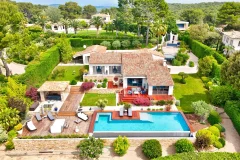Brittany Description and Information
Départements
Brittany Description
A Beautiful Varied Environment
Brittany (Bretagne), the région occupying the rugged western tip of France, is surrounded on three sides by a long (1110km) and varied coastline. There are rugged cliffs dotted with lighthouses, wide estuaries, islands and islets where bird life is protected, and picturesque harbours with strong maritime traditions. The many white sandy beaches and pretty coves make for wonderful bathing opportunities. Sailing and windsurfing are popular and some of the best scuba-diving in France can be found.. The climate is mild because of the Gulf Stream but its Atlantic exposure means that winters can be wet, very windy and bitterly cold.
The région is described as two lands - Armor meaning "land of the sea" and Argoat, at the interior, meaning "land of the woods".. While the coastline gets plenty of visitors, much of the inland is unexplored with some parts surprisingly remote and depopulated. For those venturing inland there are plenty of lovely areas to be found, such as around Heulgoat, known for its enchanting forests, which is becoming more and more popular with second-home buyers.. An ideal way to explore inland Brittany is along its waterways.
Stone has been always dominated the région's landscape. All over Brittany stone circles and mysterious megaliths can be found. Houses in Brittany are built in the traditional pink, grey and black stones with slate roofs. The Côte de Granit Rose is particularly known as a land of pink stone and the pink granite rocks along the coast have been eroded into fantastic shapes.
Really Important Traditions
For many years the people of Brittany, Bretons, have seen themselves as inhabiting a country separate from France and some still speak the Breton language. Traditional Breton customs are most evident in the far western half of the peninsular, particularly in Cornouaille on the south-western tip. Breton costume is often still worn on special occasions. The eastern half (around St. Malo) has retained little in the traditional way of life.
A Region Open on the World
Property is more expensive by the coast but it's certainly worth venturing inland where bargains can be found - wherever you are in Brittany, the sea is never very far away.
Ferry links at Roscoff, St Malo and the nearby ports in Normandy have made this an area very popular with UK holiday-makers and second home owners. It's also very popular with French holiday makers and in the summer months the beaches and attractive seaside towns such as Dinard, Vannes and Dinan are teeming with tourists.
Brittany is considered France's number one agricultural and fishing région, accounting for 10% of national production. The principal crops are artichokes and cauliflowers. There's also a good deal of industrial activity and local authorities have embarked on a campaign to promote the development of advanced technologies. The capital, Rennes, is an international centre for telecommunications research. Tourism is, of course, extremely important to the région's economy.
Brittany Population
- Population: 2,906,197
- Pop.density (people per km2): 107









